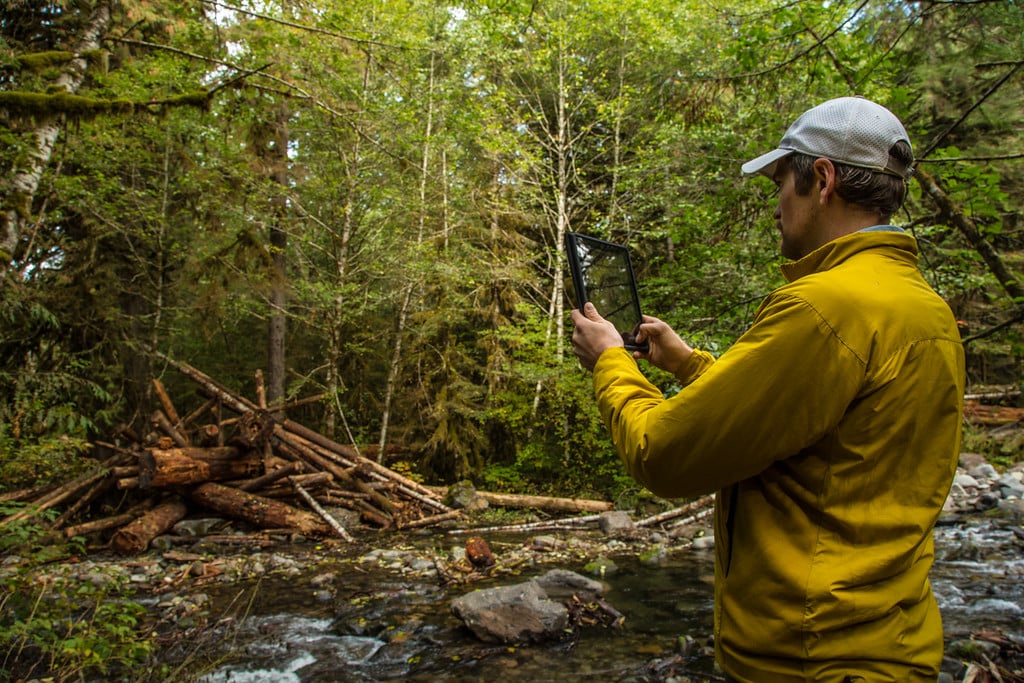Patagonia’s World Trout Initiative Aids Sandy River Basin Work
June 10, 2016

The Freshwater Trust has received a $6,000 conservation grant from Patagonia’s World Trout Initiative to continue restoration in Oregon’s Sandy River Basin.
We’ve been improving habitat for endangered and threatened salmon and steelhead populations in the region for more than a decade as part of the Sandy River Partners. This is a group of public and private organizations collaborating to restore the basin’s native fish.
Through the strategic placement of large wood and boulders and the reactivation of flow to key side channels, we have increased habitat diversity and complexity of Salmon River and Still Creek, two ecologically significant tributaries of the Sandy River.
Specifically, this award will fund the monitoring of our restoration sites.
“By gathering key data and measuring the efficacy of our efforts over time, we can be assured we’re having an impact – and we can know exactly what that impact is,” said Mark McCollister, habitat restoration director with The Freshwater Trust. “Monitoring is a critical part of any restoration effort but all too often goes unfunded.”
Many traditional restoration funders prefer to support on-the-ground construction, such as the installation of large wood habitat structures and the re-opening of side channels. Yet pre- and post-project monitoring is crucial to ensure that these actions truly have the intended results on the waterways.
The World Trout Initiative supports groups and efforts restoring and protecting wild, self-sustainable trout, salmon, and other fish species within their native range.
Spring Chinook, coho, and winter steelhead have been negatively affected by loss of habitat in the basin.
Still Creek once provided spawning and rearing habitat for native coho, spring Chinook, winter steelhead, and cutthroat trout. Roads, recreation, development, stream cleanouts, forest fires, and historic timber harvest have taken a toll.
And in 1964, sections of the Salmon River were straightened and diked by the Army Corps of Engineers following a major flood, and large wood was removed from the river and floodplain. This decreased habitat diversity and complexity.
Over the past eight years, monitoring data has demonstrated that restoration has been effective. Adult salmon and steelhead are holding in restored pools and spawning in gravel recruited from constructed wood jams. Juvenile fish are rearing in restored side channels.
“Despite the history of degradation, there’s a clear difference being made,” said McCollister. “It’s powerful to watch.”
Conducting a series of monitoring surveys will allow The Freshwater Trust to fully understand what’s working and to what degree.
“We’ll be gathering data that’s imperative not only to the long-term success of these projects, but also to ensuring we can do this elsewhere as well,” said McCollister. “We’ll take what we learn, and examine how it can be applied and replicated. This grant isn’t just helping the Sandy. It’s enabling us to refine what we’re doing for the benefit of more basins and more native fish.”
#Grant #habitat monitoring #native fish #nature #Oregon #Patagonia #river restoration #Sandy River Basin #wildlife #world trout initiative
